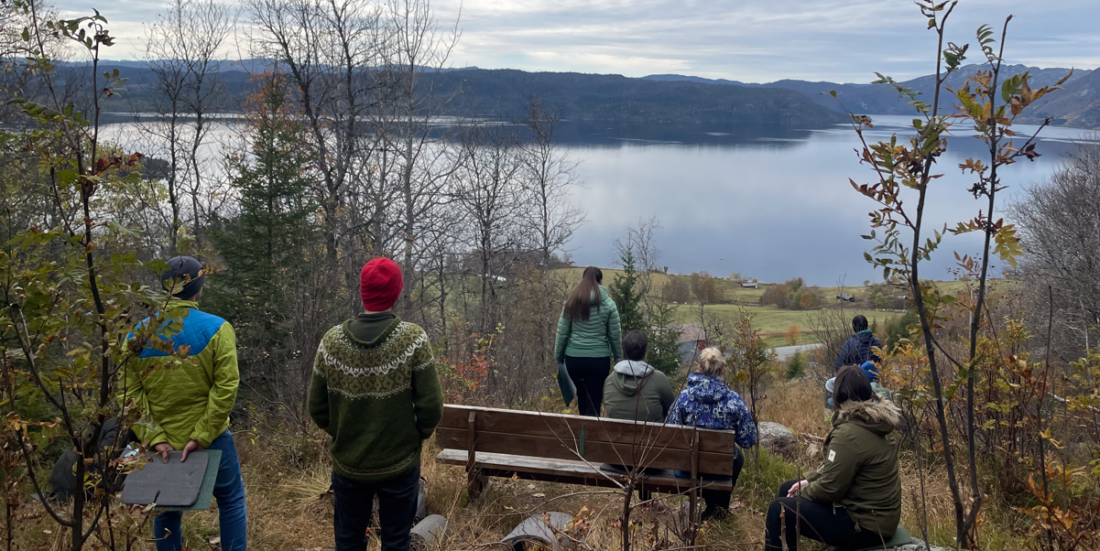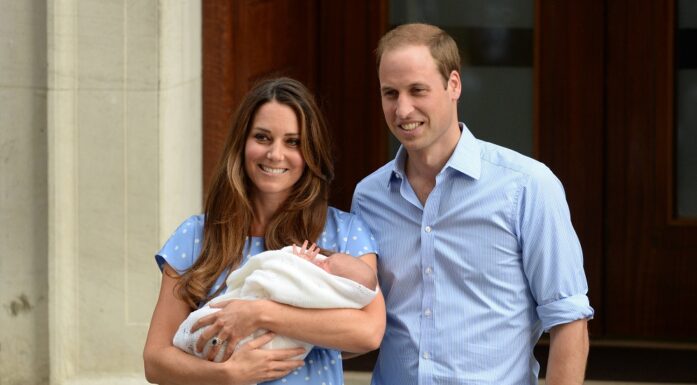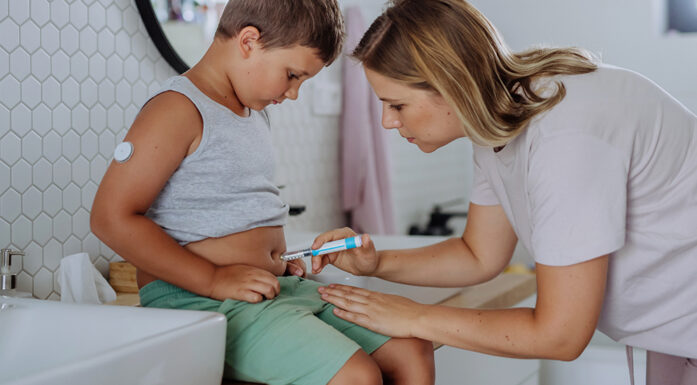A four-week opportunity for young people experiencing social exclusion
Young adults with reduced work capacity benefited greatly from the four-week interdisciplinary rehabilitation stay. The key: an individually tailored programme and a supportive community.
A four-week residential stay in rural surroundings in Telemark. A programme with physical activity and structure in daily living, combined with learning about work and education. Various leisure activities that you can participate in in the evenings and on weekends.
This describes the UngRehab programme at the AiR Rehabilitation Centre in Rauland municipality, offered to young adults between age 18 and 30 who have reduced work capacity due to complex health challenges.
These challenges can range from mild mental health issues to musculoskeletal disorders, combined with a low education level and weak connection to working life.
The required criterion for rehab participants is that they be motivated and have a goal, whether it is to enter the workforce or to return to work or education full- or part-time.
Facts about AiR:
UngRehab is a new group-based, four-week residential programme that targets young adults aged 18-30.
The service uses a biopsychosocial approach, where an interdisciplinary team offers holistic treatment with work or education as the goal.
Important components include physical activity, diet, daily rhythm, a work-focused cognitive approach and developing a return-to-work plan.
“Focusing on young adults in this age group through vocational rehabilitation is quite new,” says research scientist Mari Gunnes.

Gunnes is a researcher at SINTEF and a physiotherapist with a PhD in clinical medicine. She studies rehabilitation and the implementation of technology in the health service.
More than 20 percent of all able-bodied people in Norway end up outside the workforce for various reasons. The largest increase is found in the youngest part of the population and is growing.
“Focusing on young adults in this age group through vocational rehabilitation is quite new.”
Experiencing community as supportive
At UngRehab, you become part of a group where half of the participants are young adults between 18 and 30 years old, while the other half are over 30. The participants stay at the AiR Rehabilitation Centre for four weeks, where they are met by an interdisciplinary team that offers a complex and holistic approach to what the participants are struggling with.
“Applicants who are admitted to a stay at UngRehab are people who have often been on sick leave for six months to a year. Many have tried a number of other service programmes that haven’t worked,” says research scientist Kristin Thaulow.
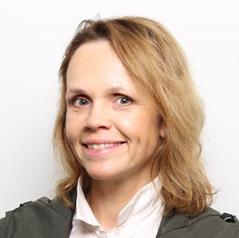
Kristin Thaulow is a researcher at SINTEF and a clinical psychologist. She has many years of experience developing and researching the benefits of VR technology.
Researchers at SINTEF have now taken a closer look at how participants at UngRehab experience the services there.
The “Vocational rehabilitation for young adults — evaluation of AiR Ung” report concludes that the interdisciplinary approach and group-based follow-up at AiR were useful for the participants.
Participants especially highlight the combination of tailored rehabilitation and a supportive community.
Applicants who are admitted to a stay at UngRehab are people who have often been on sick leave for six months to a year. Many have tried a number of other service programmes that have not worked.
“Rehab involves interdisciplinary work and a focus on resources. Participants are seen for what they can do, instead of what diagnoses they have,” says Gunnes.
“Here I feel there is a bit more positive focus than there was, like, in that system of assessments and lots of different appointments… Like when you go to one therapist after another. And there’s a lot of focus on all the sick aspects, in a way.” (UngRehab participant)
Great progress in four weeks
The young adults talk about the support and care of the interdisciplinary team. The team also pays attention to how the services are organized, through follow-up in groups, and incorporating a lot of physical activity and help in building structure into everyday life.
“Rehab involves interdisciplinary work and a focus on resources. Participants are seen for what they can do, instead of what diagnoses they have.”
The interdisciplinary team at UngRehab consists of a doctor, en employment consultant, a physiotherapist, sports educator and a speech therapist or psychologist, who work together to provide comprehensive rehabilitation.
“They work a lot on physical strength, body awareness and mobility. Many of the participants weren’t used to that. But everyone participated based on their own terms, and it was interesting to see how much progress they made in just four weeks,” says Thaulow.
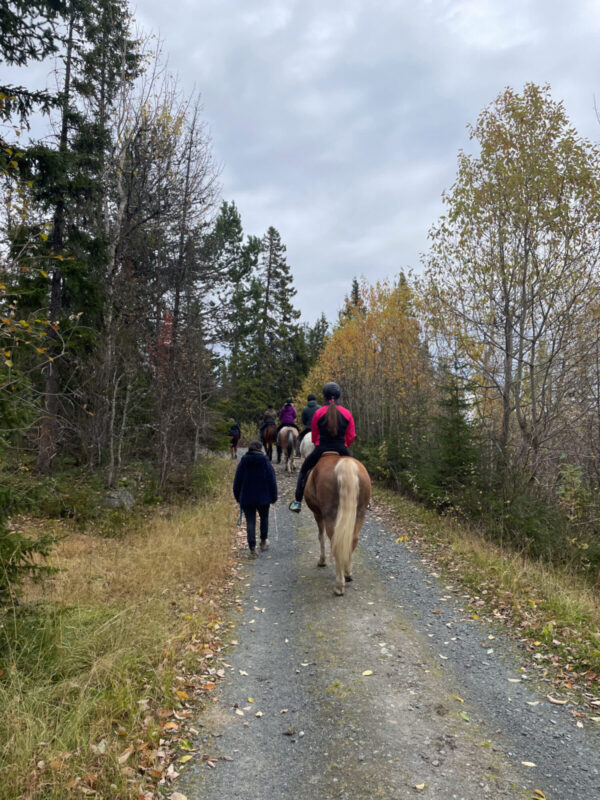
The researchers followed participants in their fieldwork and observed participants twice during their stay at UngRehab, at the beginning and the end. They also followed them remotely during that time, and conducted online interviews four weeks after the stay was over.
Several of the participants were also surprised by how well the group interactions functioned.
“Several of them had been dreading this part ahead of time,” says Thaulow.
“… What gives me the most motivation was actually that everyone just tells each other ‘come on,’ and we kind of motivate each other, we cheer and… like, don’t give up then. We cheered for each other.” (Young AiR participant about the group community)
Should be followed over time
The young people who participate in the AiR rehabilitation are also followed up by a separate youth coordinator, who contacts some of the participants in advance of their stay and follows them for the first few days.
“It seems that the youth coordinator played an important role, especially for the most insecure participants who benefitted from the extra support at the start of the stay,” says Thaulow.
Although the participants give good feedback on how the rehab was implemented, returning to everyday life, where you have to rely on yourself, is not easy.
“It’s challenging when you suddenly have to take responsibility for yourself. The plans you make with the team at AiR may seem feasible when you’re there, but when you get home it’s a lot harder. How to develop better ongoing support is a big and important issue,” says Gunnes.
The Norwegian Competence Service for Occupational Rehabilitation has established a quality register, which documents changes in work participation and self-assessed work ability from participants who have taken part in this type of rehabilitation.
“The data can be linked to NAV, and together it can provide a picture of how the participants are doing over time,” says Gunnes.
Facts about AiR:
UngRehab is a new group-based, four-week residential programme that targets young adults aged 18-30.
The service uses a biopsychosocial approach, where an interdisciplinary team offers holistic treatment with work or education as the goal.
Important components include physical activity, diet, daily rhythm, a work-focused cognitive approach and developing a return-to-work plan.
Getting help from VR technology
Several of the participants said they could have used more follow-up support after they returned home. Gunnes and Thaulow emphasize the possibilities that digital tools offer to support this transition.
“We see promising potential in offering a form of online support to young people who feel excluded or ostracized. This should be tested in practice, preferably in combination with residential care like the AiR Rehabilitation Centre provides,” says Gunnes.
Digital technology, such as app-based solutions, can include structured plans and continuing lessons learned from UngRehab that support the transition phase when contact with specialist health services has ended.
The Norwegian Competence Centre for Vocational Rehabilitation and Telemark Research Institute have examined the use of Virtual reality (VR) technology in occupational rehabilitation in new study from Volda University College. Along with two other rehabilitation centres, the participants in AiR were involved in the use of the VR game Beat Saber.
“The study shows that the participants benefited greatly from being ‘enclosed’ in the VR goggles, and they got a break from worries and struggles. The VR game required their full attention. As a result, the participants focused less on health symptoms, and more of them expressed joy and mastery. The researchers concluded that the gaming activity should be explored further, which I completely agree with,” says Thaulow.
VR technology offers opportunities for individual adaptation and can be used to achieve individual goals. The researchers at SINTEF suggest that VR technology can be integrated systematically to work on specific challenges, such as setting personal boundaries and dealing with social anxiety.
“NAV talked about my disability, and then I said no, I don’t want to become disabled or go on disability. I’d rather actually try to have a job than feel like a loser because I’m starting on disability. That’s actually something I don’t want to do at all. (…)” (UngRehab participant about the goal for their stay)
Sources:
Vocational rehabilitation for young adults —evaluation of AiR UNG
Virtual Reality Gaming in Occupational Rehabilitation – User Experiences and Perceptions, PMC.
The quotes in the article are taken from the “Vocational rehabilitation for young adults —evaluation of AiR UNG” report.
